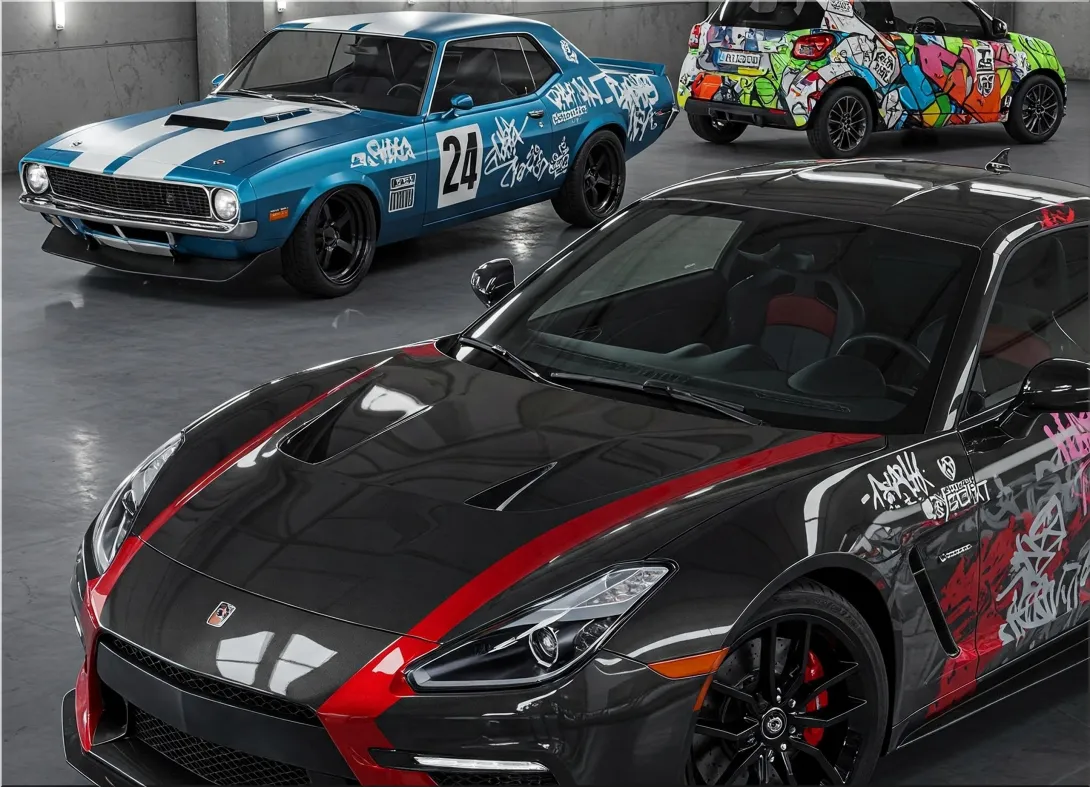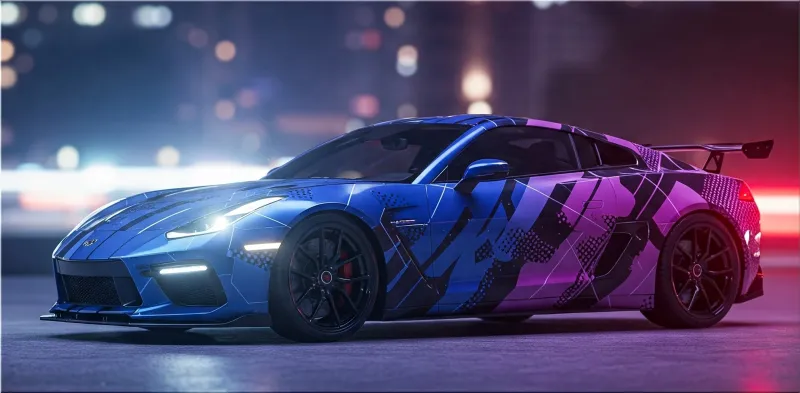Key Takeaways:
Car wraps are versatile and aesthetic enhancements typically lasting five to seven years. Proper maintenance can extend their life, helping to preserve vibrant colors and ensuring they remain a protective shield for the vehicle. Learn key maintenance tips, including washing techniques and sun protection, to maximize your car wrap's lifespan.
Table of Contents:
1. Introduction
2. Typical Lifespan of a Car Wrap
3. Factors Influencing Longevity
4. Maintenance Tips for Prolonged Life
5. Cleaning Your Car Wrap
6. Protecting The Wrap from Environmental Elements
7. Storing Your Wrapped Vehicle
8. Recognizing When a Wrap Needs Replacement
9. Conclusion
Introduction
Car wraps have become increasingly popular for those seeking to refresh their vehicle’s appearance without the permanence or cost associated with a new paint job. They offer an array of design possibilities, enhancing both aesthetics and protection. However, a common question among car owners is: How long do car wraps last? Understanding the lifespan of a car wrap and how to maintain it can maximize its durability and the visual appeal of your vehicle. In this article, we delve into the expected longevity of car wraps and offer practical maintenance tips to ensure your vehicle continues to look its best.
Typical Lifespan of a Car Wrap
The typical lifespan of a car wrap is generally between five to seven years. However, the duration can vary based on factors such as the materials' quality, the installation process, and how well the wrap is maintained. Selecting top-quality vinyl and ensuring professional installation can significantly influence how well a car wrap holds up over the years. High-grade wraps often maintain their color and adhesion longer, providing sustained beauty and protection for your vehicle.
Factors Influencing Longevity
Several factors play a crucial role in determining how long a car wrap will last:
Material Quality: The type and quality of the vinyl used are pivotal. Premium vinyl materials are more durable and less prone to fading, cracking, or peeling than their cheaper counterparts.
Professional Installation: A skilled and experienced installer ensures that the wrap is applied correctly, without bubbles or misalignments, which can worsen over time if improperly handled. Visit this site https://jaythewrapspecialist.com/ for more information.
Environmental Exposure: Cars frequently exposed to harsh sunlight, extreme temperatures, or adverse weather conditions may experience a shorter lifespan for the wraps, as these elements can accelerate deterioration.
Usage and Care: Higher mileage, frequent cleanings with abrasive materials, or exposure to harmful chemicals can impact the wrap's durability and appearance.
Maintenance Tips for Prolonged Life
Maintaining a car wrap is essential for prolonging its life and keeping it looking as fresh as the day it was applied. Here are several key maintenance tips to help extend the life of your car wrap:
First and foremost, always follow the care instructions provided by your wrap installer. Tailored guidelines based on the specific material and vehicle can be invaluable. Additionally, wash your car regularly, but avoid using high-pressure washers or harsh brushes that might lift the edges of the wrap. Opt for a gentle hand wash using a non-abrasive cloth or sponge.
Cleaning Your Car Wrap
Regular cleaning is vital to prevent dirt buildup and maintain the luster of your car wrap. Begin with a low-pressure rinse to remove loose debris. Use a soft sponge or cloth and a mild detergent-free cleaning solution to wipe the surface gently. Avoid scrubbing too hard or using rough sponges, as these can damage the wrap. Finally, rinse thoroughly and dry using a clean microfiber cloth to prevent water spots. It's best to avoid automatic car washes with stiff brushes, which can lift and scratch the wrap.
Protecting The Wrap from Environmental Elements
Consider parking in shaded or covered areas whenever possible to shield your wrap from environmental damage. Prolonged exposure to direct sunlight can fade colors and deteriorate the vinyl over time. During harsher seasons, like winter or a particularly hot summer, a car cover can provide an extra layer of protection against the elements, including UV rays, rain, snow, and pollutants.
Applying a UV protectant designed explicitly for vinyl wraps can further guard against sun-related damage. These protectants add a layer of defense that can significantly extend the wrap's life while enhancing its appearance.
Storing Your Wrapped Vehicle
If you plan to store your wrapped vehicle for an extended period, ensure the wrap remains intact. Clean the vehicle thoroughly before storage to prevent dirt, dust, or pollutants from settling. Ensure the storage space is clean, dry, and ideally climate-controlled to avoid extreme temperatures or humidity exposure. If using a cover, select one with a soft inner lining to prevent scratches. Proper storage conditions can significantly contribute to maintaining the longevity and aesthetics of the wrap.
Recognizing When a Wrap Needs Replacement
Over time, you might notice signs that indicate your car wrap is nearing the end of its lifespan. These signs include fading colors, bubbling, peeling edges, or significant cracks in the vinyl. While some wear and tear are expected, widespread or severe damage usually signals that a replacement is necessary. Timely replacement maintains the aesthetic appeal and ensures the wrap protects the vehicle beneath.


